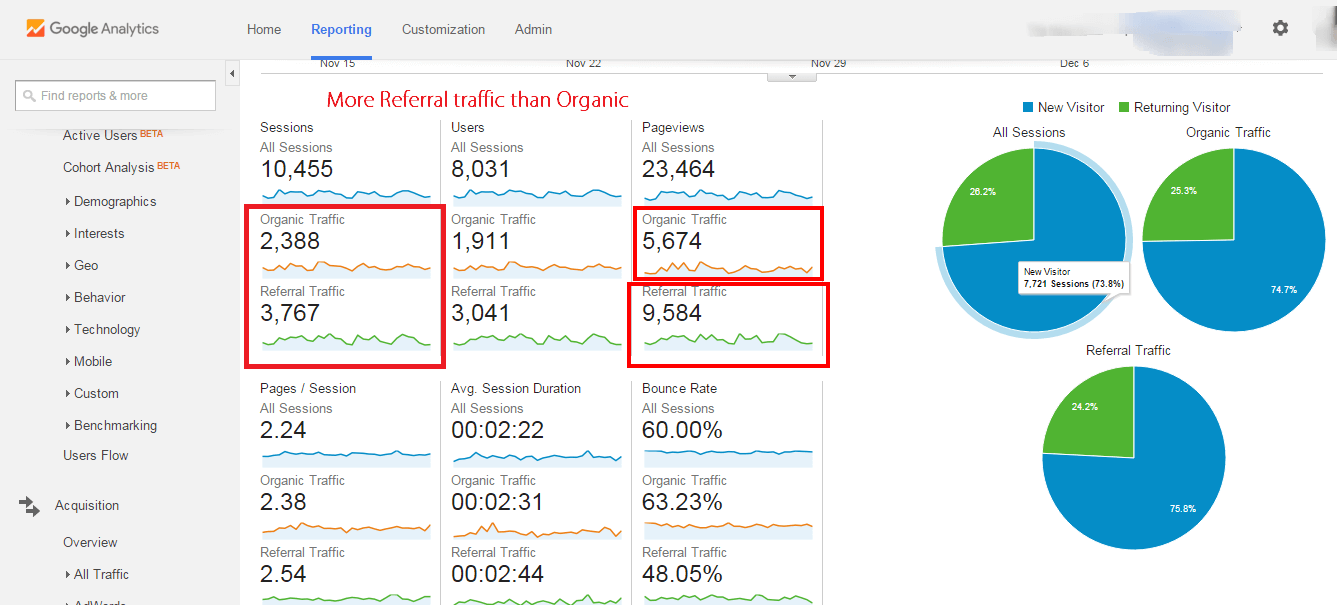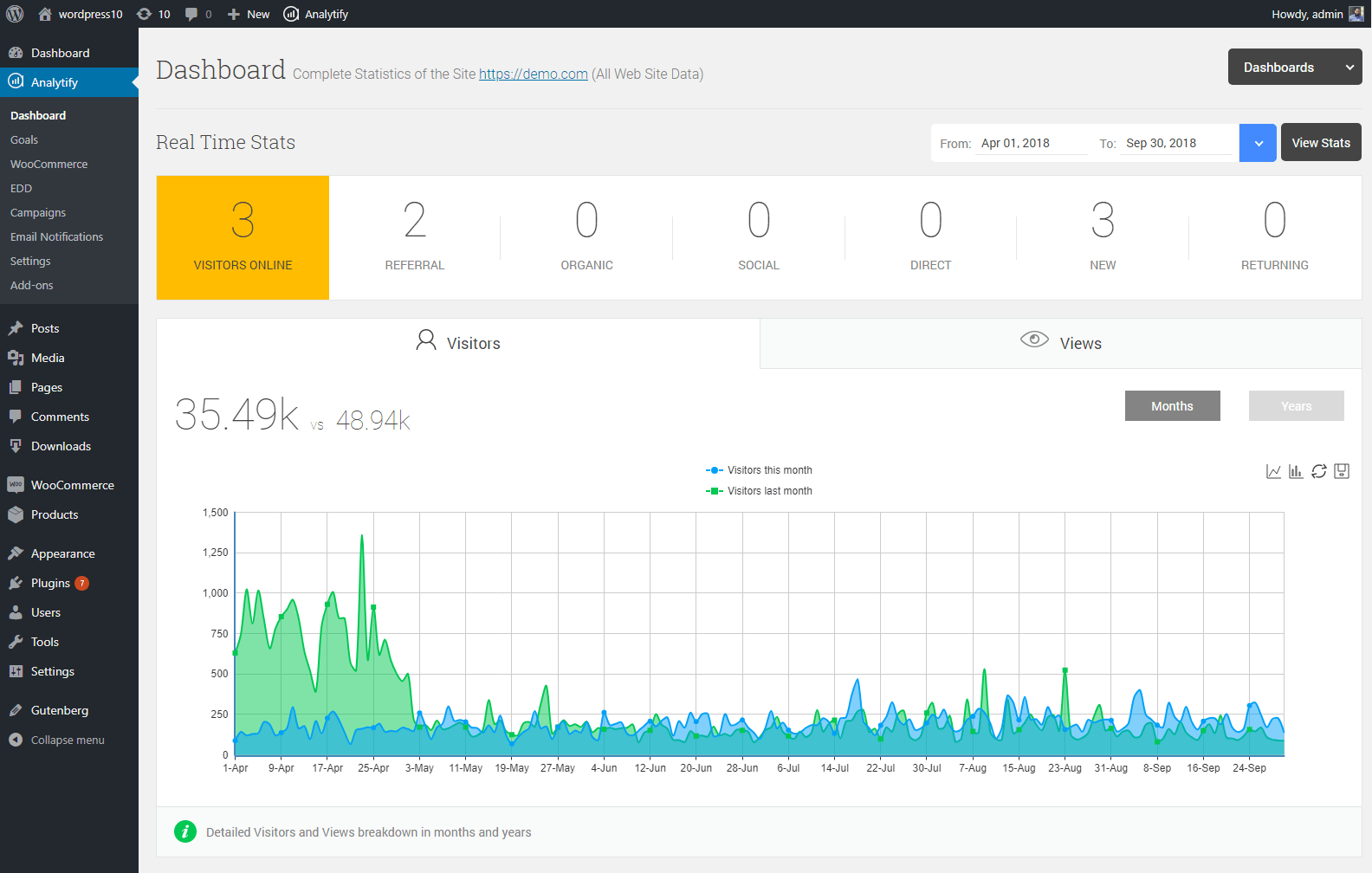Building an awesome website is just the first step on your e-commerce journey. To maximize your conversion rates, you need to know how your visitors are interacting with your content. Reliable data that can help you adapt your website and marketing strategy to suit your target audience isn’t a luxury; it’s a necessity.
Google Analytics provides you with a means of gathering this information. In this article, we will look at how you can use its segmentation feature to increase sales.
What is Google Analytics?

Google Analytics is a free tool that lets you collect the following information:
- How many people visit your site
- Where your visitors are from, both in terms of their location and how they arrived at your website
- How long they spend on your site
- Which pages on your site attract the most attention
- How visitors navigate your site
- Your conversion rate, whether you want to measure purchases, sign-ups, or how many visitors completed another desired action
All you have to do is sign up for a free account, enter your website details, and then add Google Analytics tracking code into your website. You can then browse the analytics data from your Google Analytics dashboard.
What are the segments in Google Analytics?

Segmentation allows you to take a more in-depth look at what your visitors do when they arrive at your website. When you segment visitors, you divide them into categories based on the characteristics of your choice.
For example, you can segment visitors based on their screen size, country, date of the first visit, or internet browser. Segmentation lets you compare behaviors of different groups, including behaviors associated with conversions.
You can also separate visitors by condition and sequences. The former entails segmenting users or sessions according to conditions. For example, you may create a segment of users who visited your “About” page AND spent over $100 on your site.
The latter entails segmenting visitors according to the path they took when navigating your site. For instance, you might create a segment of visitors who first looked at your “About” page, then the “FAQ” section.
So, how can you use segment analysis to boost conversion rates?
1. Segmentation helps analyze your traffic sources
You can use segments to establish where your traffic is coming from, which in turn can inform your SEO practices and other inbound marketing strategies. For example, if your reports show that referral traffic far outweighs organic traffic, it may be time to refine your SEO strategy.
Segmenting traffic by geographical location yields valuable information if you want to appeal to audiences in multiple regions. “Segmentation analysis is essential if you want to attract visitors from different countries,” explains PickWriters senior localization expert. “If your conversion rate is significantly lower for some countries compared with others, you need to evaluate whether you are accommodating customers in each of your target locations.”
If your data shows that you are receiving a substantial amount of referral traffic, this is a good sign. It suggests that you have established yourself as an expert or authority figure in your niche.
When you receive referrals from a particular site, you should ask yourself whether you can adjust your content to better serve this audience. In doing so, you could increase your conversion rates.
2. Segmentation facilitates better A/B testing
Google Analytics shows you which pages were visited by people who completed the desired action. This is a valuable starting point if you are designing A/B testing campaigns. Segmentation makes landing page testing simple, meaning you can quickly discern which version yields a higher conversion rate.
3. Segmentation helps you plan effective paid advertising campaigns
Because segmentation lets you discover where your most valuable visitors come from, you will quickly learn which channels are best for generating high-quality traffic. By tracking the behavior of visitors who arrive via paid advertising, you can make an informed decision when it comes to spending your marketing budget.
You can also use segmentation to target people who have abandoned their shopping carts by setting up a remarketing campaign with Google AdWords. This gives you the chance to raise your conversion rate even when someone has left your site.
4. Segmentation can guide you in optimizing your website across different platforms
When you can identify the devices and browsers used by your converting and non-traffic, you can better prioritize your optimization efforts. For example, if you discover that the majority of your visitors are accessing your website via mobile devices but are not making a purchase, it’s time to re-evaluate how your site appears on small screens.
Making a few small adjustments could be all you need to do to improve your conversion rate. For example, changing your button design and placement for mobile devices can boost your conversion rates by making it easier for users to browse items, add them to a shopping cart, and submit payment details.
5. Segmentation can guide your email marketing efforts
Placing all visitors who arrived via an email link into a single segment is a great way to evaluate whether your messages are bringing them back to your site. If you don’t get many visitors clicking your email links, you need to rework your copy.
On the other hand, if your recipients click your links but then fail to take action when they arrive at your site, this suggests a problem with your design or a mismatch between your target audience and your products.
Key takeaways
If you want to improve your conversion rate on your WordPress site, you can’t afford to overlook Google Analytics’ segmentation feature. When you use segments, you don’t have to rely on aggregate data that only reflects general trends. You can hone in on user behavior and tweak your site accordingly.
At first glance, the amount of data it generates might seem overwhelming. However, with a bit of patience, you will soon learn how to implement segments. Within just a few days, you will start to identify patterns in your visitors’ behavior. This empowers you to start making changes that will greatly increase your number of sales and signups.
Google Analytics for WordPress?
Google analytics is a very powerful but complex tool. It is bitter truth that you cannot always understand this data that Google Analytics displays and sometimes it’s really difficult to find out the exact information that you want to know about.
But luckily, WordPress developers have created many plugins to integrate Google Analytics in WordPress.
Analytify is one of the best and popular plugins, which displays all the detailed and complex information from Google Analytics in a very simple way within your WordPress Dashboard, so you can easily find and view any data about your website.
Download Analytify plugin for WordPress
If you are using the Jetack plugin, the premium plan also lets you integrate Google Analytics into WordPress.
